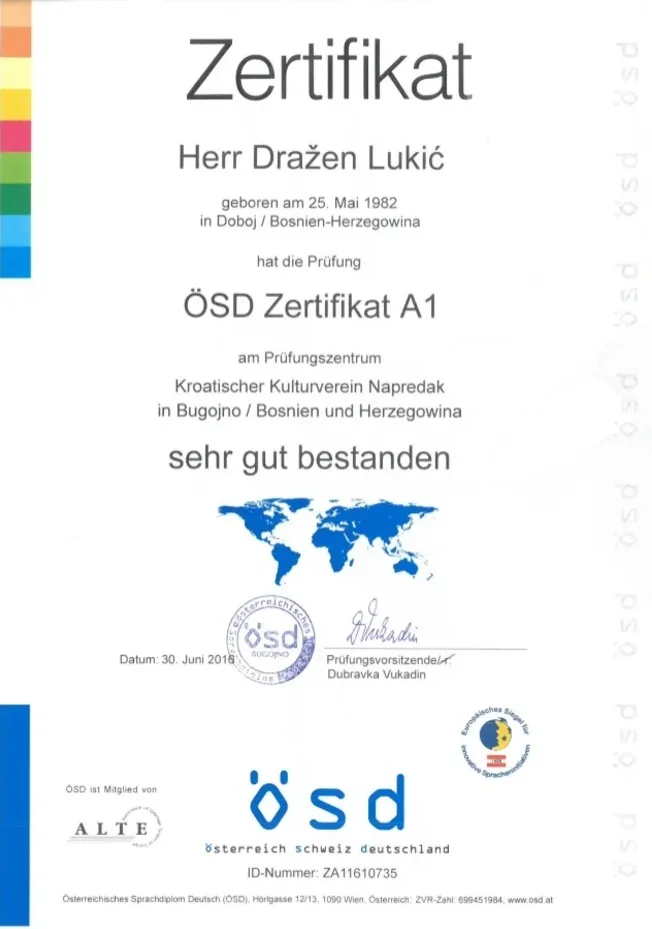Understanding the ÖSD Exam: A Gateway to Proficiency in German
The ÖSD (Österreichisches Sprachdiplom Deutsch) exam is a standardized language efficiency test designed to examine and certify German language skills. Recognized globally, the ÖSD exam accommodates various students, ranging from beginners to innovative speakers. This article aims to provide a helpful overview of the ÖSD exam, detailing its structure, levels, preparation methods, and frequently asked questions.
The Importance of the ÖSD Exam
In a globalized world where efficiency in multiple languages is highly valued, the ÖSD exam serves several essential purposes:
Accreditation of Language Proficiency: The ÖSD exam uses certificates that are acknowledged in Austria and other German-speaking countries, helping with employment opportunities and university admissions.
Standardized Assessment: The exam provides a standardized evaluation of language skills, which can be helpful for scholastic and expert purposes.
Structured Learning Path: The ÖSD offers a clear framework for language students, assisting them toward attaining specific language objectives through a structured curriculum.
Structure of the ÖSD Exam
The ÖSD exam is divided into various levels lined up with the Common European Framework of Reference for Languages (CEFR). Each level tests four key language abilities: listening, reading, composing, and speaking.
Levels of the ÖSD Exam
The ÖSD provides examinations at 6 levels, corresponding to the CEFR structure:
A1: Beginner
A2: Elementary
B1: Intermediate
B2: Upper Intermediate
C1: Advanced
C2: Proficiency
Each level has particular requirements and expectations, enabling candidates to concentrate on suitable products and practices based upon their proficiency.
Exam Components
The ÖSD exam is divided into 4 unique components:
Listening Comprehension: Candidates listen to numerous audio materials (discussions, interviews, and discussions) and respond to comprehension questions.
Checking out Comprehension: This area includes texts of differing lengths and complexities, accompanied by concerns that evaluate understanding and analysis.
Composing: sprachzertifikat b1 are required to produce written texts (letters, essays, or reports) depending upon the level, showing their capability to convey information and arguments efficiently.
Speaking: The speaking part normally includes a discussion with an examiner, requiring prospects to demonstrate fluency, pronunciation, and grammatical accuracy.
Preparation for the ÖSD Exam
Getting ready for the ÖSD exam needs a strategic method, incorporating various research study techniques and resources. Here are some efficient techniques:
Study Methods
Enroll in a Language Course: Structured courses can supply assistance and a systematic approach to language learning.
Practice with Sample Tests: Using official ÖSD sample products can acquaint prospects with the exam format and question types.
Join a Study Group: Collaborating with peers can improve discovering through shared understanding and responsibility.
Usage Language Learning Apps: Mobile applications can support language acquisition, using vocabulary practice and interactive workouts.
Resources
Books and Workbooks: Choose materials that line up with the target level of the ÖSD exam.
Online Platforms: Websites dedicated to language knowing often supply free resources, including grammar workouts and vocabulary lists.
Tutoring: Personal guideline from knowledgeable instructors can provide tailored feedback and targeted practice.
Tips for Success
Set Realistic Goals: Break down the preparation procedure into manageable turning points.
Engage with Native Speakers: Regular interaction with native German speakers can enhance conversational abilities and cultural understanding.
Immerse Yourself in the Language: Consume German-language media-- such as films, podcasts, and books-- to improve listening and checking out skills.
Practice Regularly: Consistency is type in language knowing; designate time every day for practice across all four skills.
Regularly Asked Questions (FAQs).
1. What are the main distinctions between the ÖSD exam and other German language tests?
The ÖSD exam specifically focuses on modern German use and culture, offering a distinct viewpoint compared to other examinations, such as the TestDaF or the Goethe-Zertifikat. Each evaluation has various structures, levels, and emphasis on numerous skills, accommodating specific needs and target audiences.
2. The length of time does it require to prepare for the ÖSD exam?
Preparation time differs significantly based upon the prospect's existing language abilities. Usually, it can take anywhere from a few months to over a year of dedicated research study to get ready for each level.

3. Is there an age limit to take the ÖSD exam?
No, there is no age limitation for candidates wanting to take the ÖSD exam. Individuals of any ages, from children to grownups, are motivated to participate based upon their language proficiency and goals.
4. Where can I take the ÖSD exam?
ÖSD examinations are administered at various licensed evaluation centers worldwide. Candidates can visit the official ÖSD website to discover a center near them and to inspect offered dates.
5. How are ÖSD exam results scored?
Candidates get a score for each part of the exam, which is then integrated to provide a general efficiency level. Results are typically readily available a few weeks post-examination.
Conclusion.
The ÖSD exam is a reputable language efficiency test that acts as an important tool for individuals looking for to demonstrate and accredit their German language skills. Through effective preparation, structured knowing, and access to the best resources, prospects can achieve their preferred efficiency level, enhancing their opportunities in both scholastic and professional domains.
